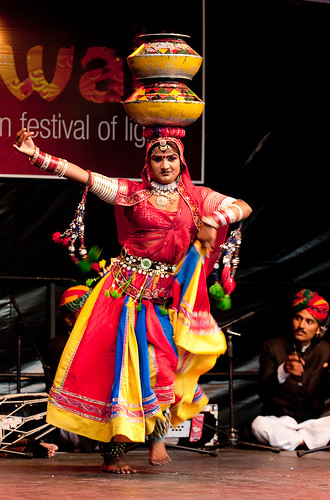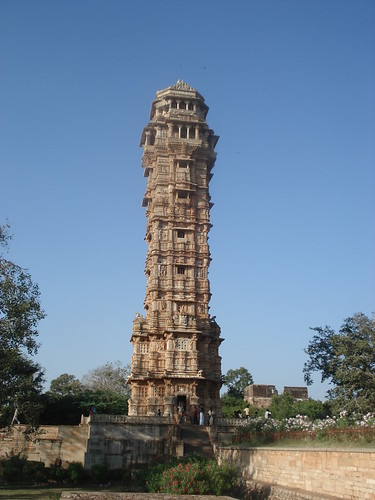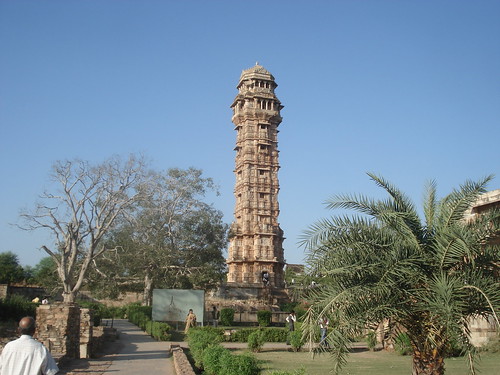The Megh (also called Meghwal or Meghwar) people are an ethnic community who claim to be of pre-Aryan origins, and who currently live mainly in northwestern parts of India and a small population live in Pakistan. As of 2008, their total population was estimated to be about 2,807,000.
In India, though they live predominantly in Rajasthan, they are also present in the Indian States of Gujarat, Maharashtra, Punjab, Jammu and Kashmir, Himachal Pradesh, Uttar Pradesh, and Haryana.
In some regions, the Meghwal people are also known by names such as Balai, Bhagat, Bhuiyar, Ganeshia, Julaha, Kabirpanthi, Koli, Kori, Meghvanshi, Mihagh, Rakhesar, Rakhia, Rikhia, and Rishia.
The Megh are believed to be people of pre-Aryan origins and belonged to the Indus Valley Civilization. They came to the region from Assyria, the Semitic Akkadian kingdom (2500-608 BC) in the Upper Tigris river region in northern Mesopotamia (present day northern Iraq) and settled in the Sapta Sindhu, literally the land of seven rivers, often identified as the Indus river along with its five major tributaries, the mythological river Sarasvati, and the river identified as the Kubha. When the Aryans invaded the region, the Meghwal migrated to the Vindhyachal and areas of the present day Maharashtra during the Megalithic period (1400-1200 BCE), and later some of them migrated to Bihar and Orissa (Odisha).
They claim that they are the descendants of Rishi Megh. In the traditional folklores, they are also linked to the Suryavansh to which Lord Ram belonged.
Another version of their origin is associated with the Indian mythology according to which Rajarishi Vritra, the ruler of the Sapta Sindhu region, and who founded the Nagavansha dynasty which ruled over the entire India. They also trace their origin to the Hindu mythological characters such as Hiranyakasipu, Prahlada, Hiranyaksha, Mahabali, Banasura, etc.
They have been originally the worshipers of Lord Shiva and Naga (the Snake God). They also worship King Mahabali who ruled Kerala and in whose honor the people from Kerala celebrate the Onam festival. They also were followers of the atheist egalitarian saint Rishi Carvaka.
Some Meghwals of the present times follow the teachings of the Sant Mat, founded by the mystic poet Saint Kabir (1440-1518), based on the supremacy of an inner, loving devotion to a supreme divine power.
The traditional occupation of this ethnic group was mainly agriculture, weaving and woodcarving. In modern times, some of the educated people of the community are employed in government jobs and other white collar jobs, while some others work in factories. Some of them also run their own businesses and industrial units. The Megh women are famous for their mastery of the traditional embroidery and Ralli-making work. They are also master-weavers of wool and cotton fabrics.
Most of the Meghwals are followers of the Hindu religion, though they mainly worship Rishi Megh, Kabir, Ram Devji and Bankar Mataji as their principal gods. Their rituals are more or less similar to the ritual practices of the Brahmins.
According to some sources, in the 13th century AD many of these people became followers of the Nizari sect of Shia Islam, and some others became followers of Christianity.
Women are considered of low status in traditional Meghwal communities. Their marriages are arranged by their families before puberty, and after marriage, they move to their husbands’ families. Divorce is generally allowed, and maintenance or compensation is paid to the divorced woman. The custody and upbringing of the children of the divorced couples are the responsibility of the husbands.
Meghs enforce excommunication of persons who break the community traditions. This practice, allegedly, mostly affects their women, who are increasingly subjected to social discrimination on various grounds.
The Megh women in Rajasthan are famous for their intricately embroidered costumes and jewelry. Their costumes are distinguishable by the exquisite use of a primary red pigment extracted from crushed insects.
Exotic hand-embroidered costumes are essential part of the dowry of the Meghwal women. Married women usually wear gold earrings, nose rings and necklaces and other neckpieces made of silver or gold. The ornaments are mostly embedded with precious stones such as ruby, emerald, sapphire and other precious gems.



